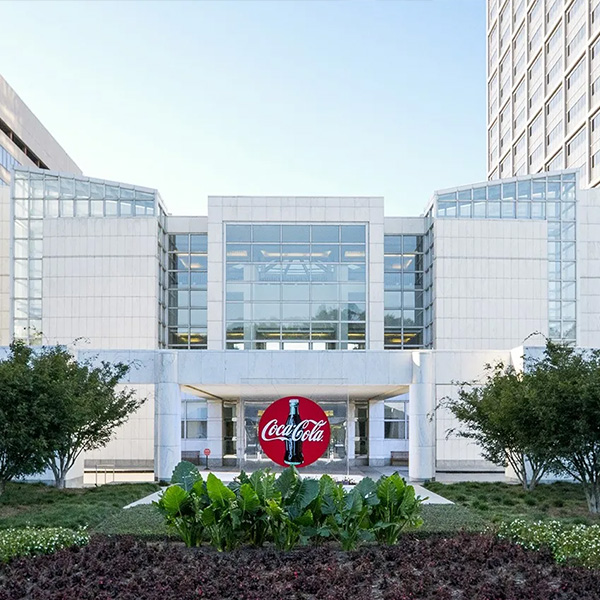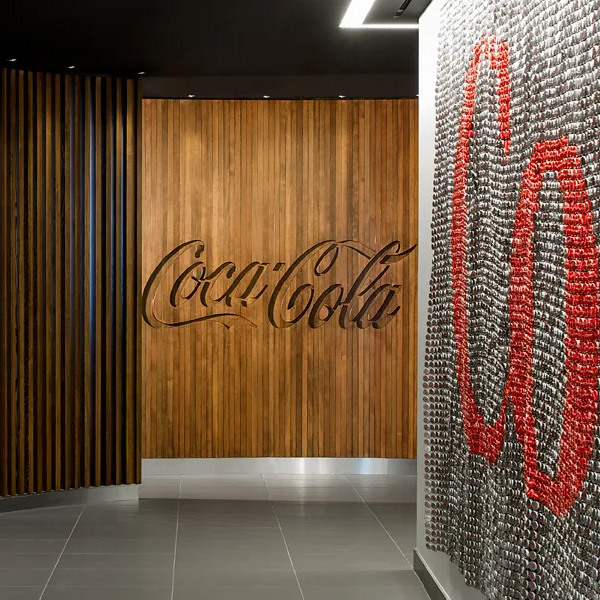Occupational Health & Safety Policy
2021
The Coca‑Cola Company (TCCC) and our bottling partners believe in creating a safe working environment where “Zero is Possible” as it relates to injuries and illnesses for our employees, contractors, and to people in the communities in which we interact. Providing a safe and healthy workplace is part of our culture, and is embedded in our purpose to refresh the world and make a difference.
Vision
Our vision is to craft the brands and choice of drinks that people love, to refresh them in body and spirit while doing so in a manner that ensures safety across our entire system, whether that be in our manufacturing facilities, our laboratories, distribution centers, our office locations, or in the marketplace.
We promote a culture of caring and safe behavior, reaching beyond compliance to ensure continuous improvement through hazard identification and implementation of controls to minimize safety risks.
Guiding Principles
We will conduct our business in ways that will ensure safety in everything that we do. This includes working with select suppliers and business partners that have a strong commitment to the running of safe operations and processes.
To drive toward this ambition, we will adhere to applicable legal and TCCC requirements relating to occupational health & safety everywhere we do business. In addition, we believe that:
- Our safety performance is integral to operational excellence and brand integrity, and has a positive impact on our employees, our stakeholders, and the communities in which we operate.
- Occupational injuries and illnesses are preventable. Each occupational injury and illness creates an opportunity to strengthen our management systems.
- Leadership plays a key role in building capability, implementing systems, and establishing the culture that manages health & safety like any other key business result.
- Safety is everyone’s responsibility. Each of us owns health & safety and is responsible for ensuring the safety of our peers, ourselves, site visitors and members of the public with which we interact during our duties delivering product in the marketplace.
- Safe behavior is a fundamental job requirement because the work must be done safely or not at all.
Occupational Health & Safety Governance & Stewardship
The Coca‑Cola Operating Requirements (KORE) define the policies, standards and requirements for managing our health & safety responsibilities across our operations. In addition to requiring compliance with applicable legal requirements, KORE also requires that our manufacturing facilities implement ISO 45001 (internationally recognized standard for Occupational Health & Safety) that ensures the provision of resources to achieve the organization’s safety objectives, together with the fostering of continual improvement in health & safety performance.
To guide us in working to achieve a safe and healthy working environment, KORE also defines a rigorous set of operational controls to manage known risks. These controls generally align with top global requirements and consensus standards. They include the following, keeping in mind that the required scope and details of each element below should be consistent with the risks and circumstances of individual operations:
Risk Assessment and Management
- Identify, evaluate, and address safety risks and emerging trends.
- Use regular, periodic, and objective assessments to ensure compliance with the company and applicable legal requirements.
- Continue to leverage our Life Saving Rules to drive error-tolerant systems and processes, and ensure we have layered defenses in place so that when we fail, we are able to fail safely.
Leadership Commitment
- Establish visible leadership commitment to occupational safety and health performance and improvement through:
- Integration of health & safety into business plans, results, performance reviews and other business routines.
- Regular and visible leadership involvement in health & safety communication and improvement activities, including annual updates of the organization’s health & safety performance goals and objectives.
Engaged & Capable Employees
- Provide clearly defined roles and responsibilities, training, communication systems and participation opportunities to promote effective engagement from employees at all levels.
Safety Culture
- Promote a positive safety culture through active engagement at all levels of the organization, including system leaders, employees, networks, and councils. Enable a positive safety culture with the following actions:
- Embed the philosophies of Human and Organizational Performance (HOP) across the entire supply chain.
- Establish processes and learning teams that regularly evaluate and reinforce safe work behaviors, understand the context of the way work is done, and ensure that effective defenses are in place.
- Ensure senior leadership at each site sets the example, promotes safe work behaviors, and ensures the necessary tools and resources are available for safe work to occur.
- Ensure employees are encouraged, supported, and empowered to participate in safety processes.
- Ensure employee feedback is solicited to identify strengths and weaknesses of the safety program and take appropriate action.
- Establish processes to ensure safety trends are identified and analyzed with effective action plans established.
Objectives and Performance Tracking
- Establish and track the organization’s health & safety performance goals and objectives.
- Regularly report on our ESG priorities and progress through annual reporting such as our Business & Environmental, Governance and Social Report, including metrics assurance conducted by recognized, credible third-party certification organizations.
Stakeholder Engagement
- Collaborate, as appropriate, with internal and external stakeholders through communication and sharing of lessons learned and best practices to leverage the organization’s ability to reduce workplace risks.



